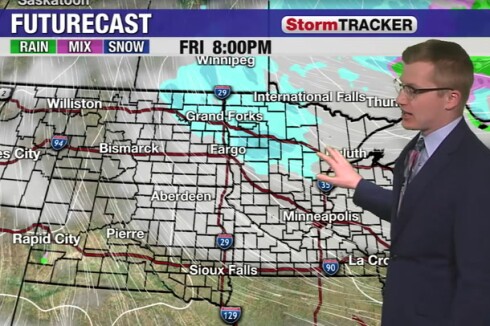It’s not likely that anyone would call an immature cedar waxwing a “pretty bird.” Immature waxwings lack the glossy sleekness that characterizes their parents, and they lack most of the field marks of adult birds. Young waxwings do have a hint of a crest that will become obvious as they age. The only other visual clues that an immature bird is a waxwing are a bright yellow band at the tip of the tail and a black “mask” between the bill and the eye.
Overall, young waxwings appear brownish yellow with smudges and streaks on their breasts. Adults appear silky brown with grayish wings and yellow underparts.
RELATED STORIES:
-
Mike Jacobs: Fledgling swallows signal summer’s end Barn swallows nest throughout North America, in every state and every Canadian province.
-
Mike Jacobs: Wrens linger into late summer House wrens fall into a category of birds known in bird speak as “ellbeejays,” an acronym for “little brown jobs.”
-
Mike Jacobs: Northern flickers continue to confound Flickers are conspicuous birds, and I doubt I would have missed a nesting pair in the neighborhood, although they become shy in nesting season, as many birds do.
Young waxwings do act like their parents, so I knew immediately that the small flock of birds that settled into an eastern red cedar were waxwings. Waxwings use a variety of buzzing and chipping calls to stay in touch with each other, and this noise alerted me to their presence.
I planted the red cedar right after Suezette and I moved to our place west of Gilby, N.D., specifically to attract waxwings. The plant grew quickly. It’s a good-sized bush now, and this year it has an especially heavy crop of cedar berries. That’s what attracts the cedar waxwings. In fact, the association of the birds and the bushes is so close that the bush gave the bird its name.
ADVERTISEMENT
There’s a second species of waxwing, called Bohemian waxwing. This is a reference to the wandering habits of both of these species. They are abundant some years and absent or nearly so at other times. Pairs of cedar waxwings have nested in small trees at our place.
It’s a pleasure to have them, and it’s no surprise. Our property has become an open woodland with trees of various sizes. This is the habitat that waxwings seek, especially if it includes smaller trees with open canopies not too high above the ground. These are the ones the waxwings choose for nesting.
During the summer, the waxwings behave like flycatchers. That is to say that they are perch-and-pounce hunters, waiting in the outermost branches of a tree, then swooping out to snatch flying insects. Later in the season, the birds switch to small fruits, including my cedar berries.
The Bohemian waxwing doesn’t occur here in the summer months. Its nesting range is farther north. It is one of the most frequent of the “irrupters” that move south in winter seasons, sometimes in very large numbers. Their movement depends on the availability of food. A poor berry crop in the north sends Bohemian waxwings southward.
Cedar waxwings wander about in the same way and for the same reason. Most winters, at least a few remain in our area, and some years, they are numerous while in other years, they are absent. Some years, both species occur, and in other years, only one.
The waxwings are remarkably similar and yet instantly identifiable as different species. The general outline of a waxwing is of a sleek bird with longish wings and tail and a crest on the head. This is not always obvious, but it is a good marker for waxwings.
Both species have spots of color on the wings like drops of wax, and this gives rise to their shared name. The spots are red in cedar waxwings, red and yellow in Bohemian waxwings. Although the spots are reliable field marks, they can be hard to see, and the color can be difficult to determine.
Fear not, however! There is yet another distinguishing feature that will clinch identification. The trick is to look under the tail. As silly as this may seem, it’s actually relatively easy to accomplish, because waxwings usually perch above average human height, and they are relatively tolerant of human presence.
ADVERTISEMENT
If the area under the tail is red, you’ll know you’re seeing Bohemian waxwings. If these “undertail coverts,” as they’re called, are pale, the birds are cedar waxwings. Look at more than one bird. The two species sometimes flock together.
I used the plural here because waxwings are rarely seen alone, except in nesting season.
Seeing waxwings makes a moment special for me; they seem to spread good cheer. Of course, cheering me up is not part of a waxwing’s job description. The birds are pursuing their own interests.
They’re always welcome.
Jacobs is a retired publisher and editor of the Herald. Reach him at mjacobs@polarcomm.com.









